Gramíneas forrajeras perennes de crecimiento estival (C4) para la región Pampeana semiárida. En el contexto de la intensificación ganadera y del cambio climático
En el presente artículo se consideran y discuten aspectos relacionados con el por qué, cómo y dónde utilizar gramíneas perennes exóticas en la región Pampeana semiárida central, en el contexto de la intensificación ganadera y del cambio climático. Así como, sus principales características y limitaciones para su producción y utilización en la región templada. También, se identifican áreas donde se requeriría profundizar la investigación. La combinación complementaria de gramíneas perennes de crecimiento estival (C4) con el pastizal o campo natural disminuiría la dependencia de los suplementos o los forrajes conservados y, en consecuencia, los costos de producción. Además, permitiría mejorar la condición del pastizal y superar deficiencias estacionales, en la producción y en el contenido de nutrientes, inherentes con la utilización de un único recurso y por los efectos de las sequías, debido a su elevada eficiencia en el uso del agua, con el consecuente impacto sobre la producción animal y estabilidad del sistema productivo. Por último, se sintetizan aportes relacionados con aspectos agronómicos de la producción y la utilización de gramíneas C4.
Palabras claves: Sistema de pastoreo complementarios, cambio climático, agriculturización, gramíneas perennes de crecimiento estival, región Pampeana semiárida central.
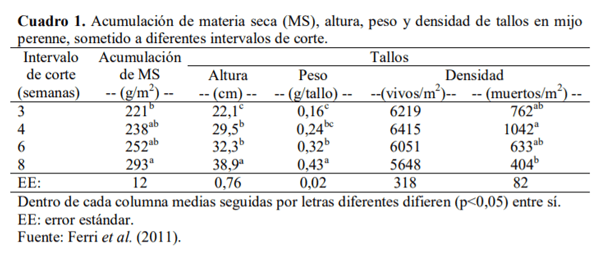
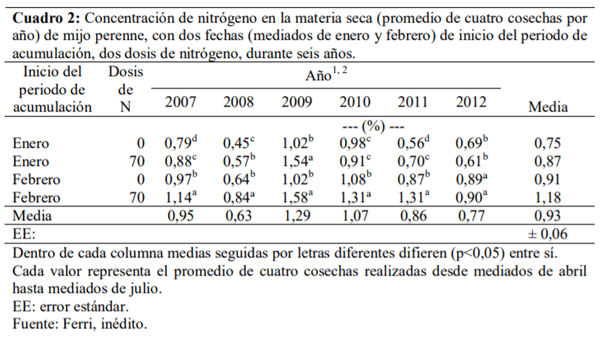
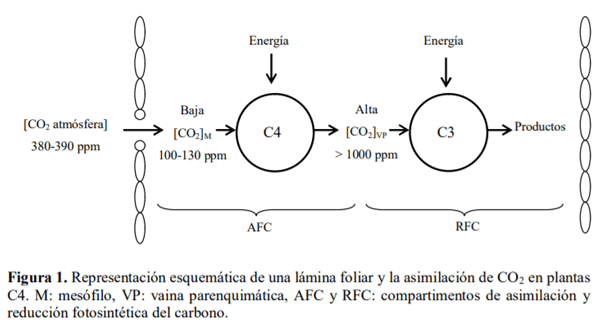
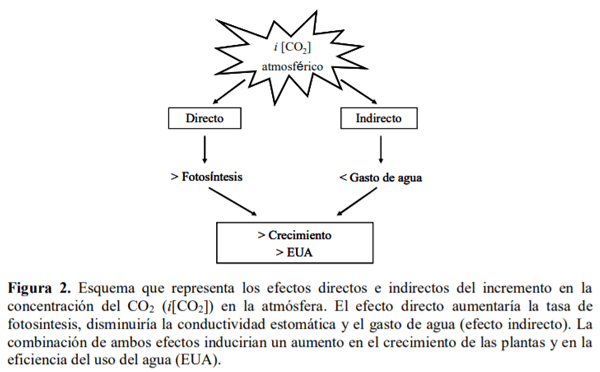
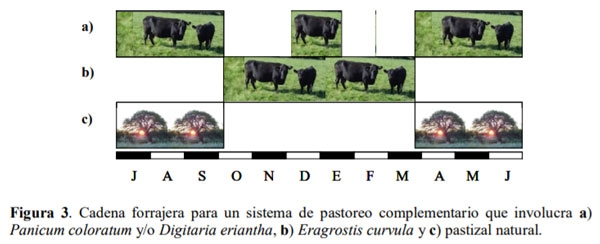

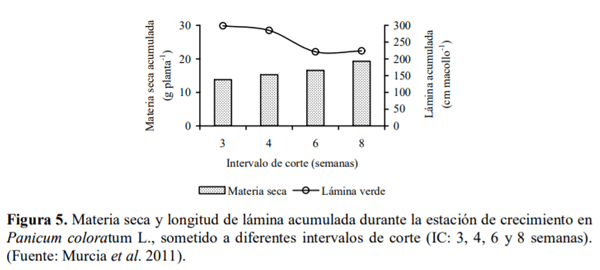
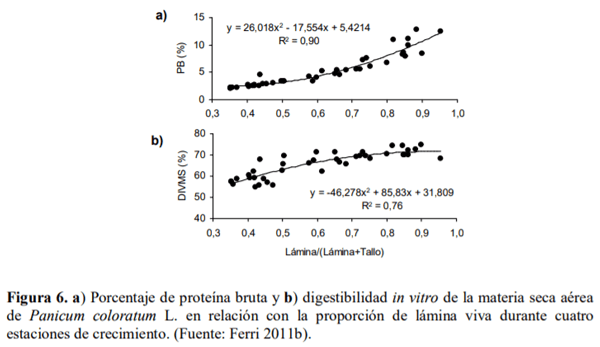
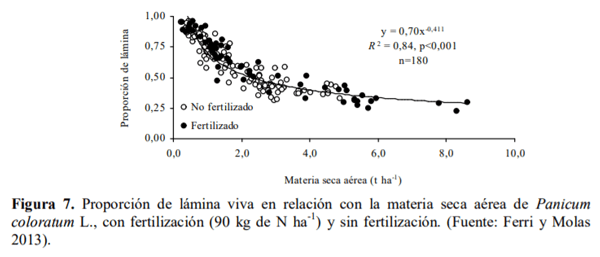
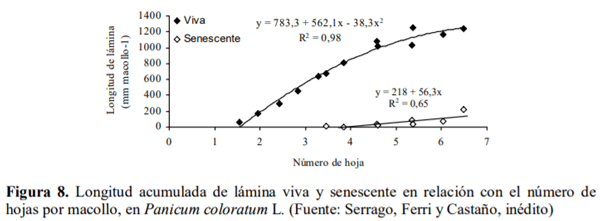
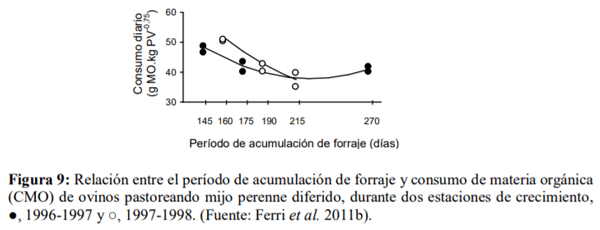
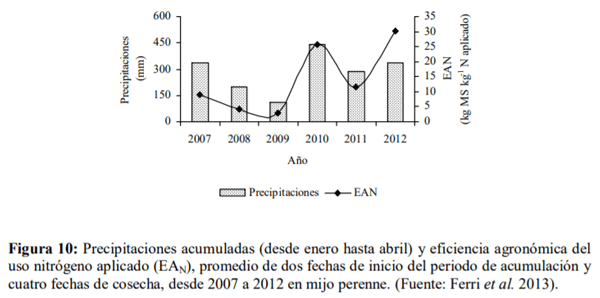
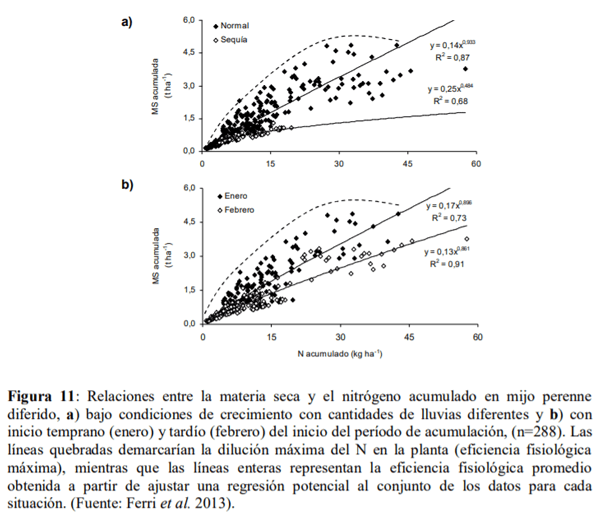
Adkins S.W., Bellairs S.M. and Loch D.S. 2002. Seed dormancy mechanisms in warm season grass species. Euphytica 126 1:13-20.
Adler P.R., Sanderson M.A., Boateng A.A., Weimer P.J. and Jung H.-J.G. 2006. Biomass yield and biofuel quality of switchgrass harvested in fall or spring. Agronomy Journal 98:1518-1525.
Ainsworth E.A. and Rogers A. 2007. The response of photosynthesis and stomatal conductance to rising [CO2]: mechanisms and environmental interactions. Plant Cell Environment 30:258-270.
Allen V.G., Batello C., Berretta E.J., Hodgson J., Kothmann M., Li X., McIvor J., Milne J., Morris C., Peeters A. and Sanderson M. 2011. An international terminology for grazing lands and grazing animals. Grass and Forages Science 66:2-28.
Anuario Estadistico. 2010. Anuario estadístico de la Provincia de La Pampa. (http://www.estadisticala pampa.gov.ar) consulta noviembre 2011.
Bandera, R., Bertram, N., Bolleta, A., Chiacchiera, S., Ferri, C.M., Galíndez, G., Lauric, A., Malagrina, G., Otondo, J., Petruzzi, H., Striztler, N. y Torres Carbonell, C. 2013. Las gramíneas forrajeras megatérmicas en la región templada de Argentina. O. Bertin (ed.), INTA. 46 p.
Barre P., Emile J.C., Betin M., Surault F., Ghesquière M. and Hazard L. 2006. Morphological characteristics of perennial ryegrass leaves that influence short-term intake in dairy cows. Agronomy Journal 98:978-985.
Beerling D.J. y Kelly C. K. 1997. Stomatal density response of temperate woodland plants over the past seven decades of CO2 increase: a comparison of Salisbury (1927) with contemporary data. American Journal of Botany 84:1572-1583.
Bekker A., Holland H.D., Wang P.L., Rumble D., Stein H.J., Hannah J.L., Coetzee L.L. and Beukes N. J. 2004. Dating the rise of atmospheric oxygen. Nature 427:117-120.
Bidegain M., Caffera R.M., Blixen F., Pshennikov V., Lagomarsino J.J., Forbes E.A. and Nagy G.J. 2005. Tendencias climáticas, hidrológicas y oceanográficas en el Río de la Plata y Costa Uruguaya. In: V. Barros, A. Menéndez y G.J. Nagy (Eds). El cambio climático en el Río de la Plata. CIMA-CONICET-UBA, Buenos Aires, pp. 137-143.
Boonman J.G. 1971. Experimental studies on seed production of tropical grasses in Kenya. General introduction and analysis of problems. Netherlands Journal of Agricultural Science 19:23-36.
Booth D.T. and Haferkamp M.R. 1995. Morphology and seedling establishment. In: D.J. Bedunah and R.E. Sosebee (Eds.). Physiological ecology and development morphology. Soc. For Range Manage. Denver, CO, pp. 239-290.
Boval M., Fanchone A., Archimède H. and Gibb M.J. 2007. Effect of structure of a tropical pasture on ingestive behaviour, digestibility of diet and daily intake by grazing cattle. Grass Forage Science 62:44-54.
Bowes G. 1993. Facing the inevitable: plants and increasing atmospheric CO2. Annual Review of Plant Physiology and Plant Molecular Biology 44:309-332.
Burnell J.N. 1990. A comparative study of the cold sensitivity of piyruvate, Pi dikinase in Flaveria species. Plant and Cell Physiology 31:295-297.
Cano E. 1980. Inventario integrado de los recursos naturales de la provincia de La Pampa.
INTA, Provincia de La Pampa, UNLPam, 493 pp.
Casella E. and Soussana J-F. 1997. Long-term effect of CO2 enrichment and temperature increase on the carbon balance of a temperate grass sward. Journal of Experimental Botany 48:1309-1321.
Cassman K.G., Dobermann A.R. and Walters D.T. 2002. Agroecosystems, nitrogen-use efficiency, and nitrogen management. Ambio 31:132-140.
Castañeda M.E. and Barros V. 1994 .Las tendencias de la precipitación en el Cono sur de América al este de los Andes. Meteorológica, pp. 23-32.
Chacon E.A., Stobbs T.H. and Dale M.B. 1978. Influence of sward characteristics on the grazing behavior and growth of Hereford steers grazing tropical grass pastures. Australien Journal of Agricultural Research 29:89-102.
Chapin F.S. and Moilanen L. 1991. Nutritional controls over nitrogen and phosphorus resorption from Alaskan birch leaves. Ecology 72:709–715.
Chinthapalli B., Murmu J. and Raghavendra A.S. 2003. Dramatic difference in the responses of phosphoenolpyruvate carboxylase to temperature in leaves of C3 and C4 plants. Journal of Experimental Botany 54:707-714.
Coleman S.W., Moore J.E. and Wilson J.R. 2004. Quality and Utilization. In: L.E. Moser, B.L. Burson, and L.E. Sollenberger (Eds.). Warm-Season (C4) grasses. Agronomy Monography 45. ASA, CSSA, SSSA, Madison, WI, pp. 267-308.
Collado A.D. y Dellafiore C.M. 2004. Influencia de la fragmentación del paisaje sobre la población del venado de las pampas en el sur de la provincia de San Luis. Revista de Investigaciones Agropecuarias 31:39-55.
Covas G. 1991. Introducción del pasto llorón en la Republica Argentina. In: O.A. Fernández, R.E. Brevedan y A.O. Gargano (Eds.). El pasto llorón. Su biología y manejo. CERZOS, Universidad Nacional del Sur, Bahía Blanca, pp. 1-6.
Cook S.J. 1980. Establishing pasture species in existing swards: A review. Tropical Grassland 14:181-187.
Cook B., Pengelly B., Brown S., Donnelly J., Eagles D., Franco A., Hanson J., Mullen B., Partridge I., Peters M. and Schultze-Kraft R. 2005. Tropical forages. An interactive selection tool. (www.tropicalforages.info).
Cooke J.E.K. and Weih M. 2005. Nitrogen storage and seasonal nitrogen cycling in populus:
Bridging molecular physiology and ecophysiology. New Phytologist 167:19-29.
Da Silva S.C. and Carvalho P.C.F. 2005. Foraging behaviour and herbage intake in the favourable tropics/subtropics. In: D.A. McGilloway (Ed.). Grassland: a global resource. Wageningen: Wageningen Academic, pp. 81-95.
Daehler C.C. 2003. Performance comparisons of co-occurring native and alien invasive plants: implications for conservation and restoration. Annual Review of Ecology, Evolution and Systematic 34:183-211.
Dengler N.G. and Nelson T. 1999. Leaf structure and development in C4 plants. In: R.F. Sage and R.K. Monson (Eds.). C4 plants biology. San Diego, Academic Press, pp. 133-172.
Dlugokencky E. and Tans P. 2013. NOAA/ESRL (www.esrl.noaa.gov/gmd/trens/). Dobermann A.R. 2005. Nitrogen use efficiency – state of the art. Agronomy – Faculty
Publications. Paper 316, University of Nebraska, Lincoln, USA. 16p. (www.digitalcommons.unl.edu/agronomyfacpub/316).
Dohleman F.G., Heaton E.A, Leakey A.D.B., Long S.P. 2009. Does greater leaf-level photosynthesis explain the larger solar energy conversion efficiency of miscanthus relative to switchgrass? Plant Cell and Environment 32:1525-1537.
Du Y-C., Nose A., Wasano K. 1999. Effects of chilling temperature on photosynthetic rates, photosynthetic enzyme activities and metabolite levels in three sugarcane species. Plant, Cell and Environment 22:317-324.
Edwards E.J. and Still C.J. 2008. Climate, phylogeny and ecological distribution of C4 grasses. Ecology Letters 11:266-276.
Ehleringer J.R. 2005. The influence of atmospheric CO2, temperature, and water on abundance of C3/C4 taxa. In: J.R. Ehleringer, T.E. Cerling y M.D. Dearing (Eds.). A History of atmospheric CO2 and its effects on plants, animals, and ecosystems. New York, Springer, pp. 214-232.
Ehleringer J.R. and Björkman O. 1977. Implications of quantum yields for CO2 uptake in C3 and C4 plants: dependence on temperature, CO2, and O2 concentration. Plant Physiology 59:86-90.
Ehleringer J.R., Cerling T.E. and Dearing M.D. 2002. Atmospheric CO2 as a global change driver influencing plant-animal interactions. Integrative and Comparative Biology 42:424-430
Ehleringer J.R. and Monson R.K. 1993. Evolutionary and ecological aspects of photosynthetic pathway variation. Annual Review of Ecology and Systematic 24:411-439.
El-Sharkawy M.A. 2009. Pioneering research on C4 photosynthesis: implication for crop water relations and productivity in comparison to C3 cropping systems. Journal of Food, Agriculture and Environment 7:468-484.
Estelrich H.D., Chirino C.C., Fernández B.C. y Morici E.F. 1997. Cambios florísticos en los sistemas naturales de la Región Semiárida Pampeana por efecto del pastoreo. XVIII Reunión Argentina de Ecología.
Evers G.W and Holt E.C. 1972. Effects of defoliation treatments on morphological characteristics and carbohydrate reserves in kleingrass. Agronomy Journal 64:17-20.
Evers G.W., Redmon L.A. and Provin T.L. 2004. Comparison of bermudagrass, bahiagrass, and kikuyugrass as a standing hay crop. Crop Science 44:1370-1378.
Ferri C.M. 2002. Implicancias del diferimiento de la utilización de Panicum coloratum L. sobre la estructura de la vegetación, la composición química del forraje y el consumo de ovinos en pastoreo. Tesis Doctoral. Facultad de Ciencias Agrarias, Universidad de Mar del Plata, Mar del Plata, Argentina, 161 p.
Ferri C.M. 2011a. Relaciones entre composición química y estructura en Panicum coloratum L. Revista Argentina de Producción Animal 31:503 (resumen).
Ferri C.M. 2011b. The seasonal and Inter.-annual patterns of biomasa accumulation and crude protein in kleingrass (Panicum coloratum) in the semiarid Pampean region of Argentina. Ciencia e Investigación Agraria (Chile) 38:191-198.
Ferri C.M., Brizuela M.A., Cid M.S. y Stritzler N.P. 2006. Dinámica de acumulación de láminas foliares y estructura del forraje diferido de Panicum coloratum L. Agricultura Técnica (Chile) 66:376-384.
Ferri C.M. y Jouve V.V. 2008. Efectos del manejo de Panicum coloraum L. diferido sobre la acumulación de forrajimasa y concentración proteica. Revista Argentina de Producción Animal 28:434-435 (resumen).
Ferri C.M. y Molas M.L. 2013. Predicting green leaf proportion in ungrazed kleingrass (Panicum coloratum L.) in the semiarid Pampas region of Argentina. Chilean Journal of Agricultural Research 73:193-195.
Ferri C.M., Jouve V.V. y Sáenz A.M. 2013. Efectos del manejo de Panicum coloratum L. diferido sobre la eficiencia de uso del nitrógeno. 23º Congreso Lationoamericano de Producción Animal, La Habana, Cuba.
Ferri C.M., Petruzzi H.J., Stritzler N.P. y Jouve V.V. 1998. Consumo voluntario, digestibilidad in vivo y proteína bruta dietaria en distintas épocas de utilización de Panicum coloratum diferido. Revista Argentina de Producción Animal 18:163-170.
Ferri C.M., Sáenz A.M. y Jouve V.V. 2011a. Acumulación de materia seca en “mijo perenne” (Panicum coloratum L.) bajo diferentes intervalos de corte. Revista Argentina de Producción Animal 31:504 (resumen).
Ferri C.M., Stritzler N.P., Brizuela M.A., Piper F.I. y Petruzzi H.J. 2001. Efecto de la oferta de pasto sobre la ingestión de ovinos en pastoreo de Panicum coloratum L. diferido. Investigación Agraria: Producción y Sanidad Animal 16:259-267.
Ferri C.M., Stritzler N.P. y Brizuela N.P. 2011b. Heterogeneidad vertical del canopeo y utilización de pasturas diferidas de mijo perenne por ovinos. Revista Argentina de Producción Animal 31:17-28.
Ferri C.M., Stritzler N.P. y Pagella H.J. 2008. Tasa de aparición de hojas durante tres temporadas de crecimiento en Panicum coloratum L. cv Verde. Revista Argentina de Producción Animal 28:193-200.
Fisher M.J., Rao I.M., Ayarza M.A., Lascano C.E., Sainz J.I. Thomas R.J. and Vera R.R.1995. Scientific correspondence, reply. Nature 376:473.
Frank E.O., Llorens E.M. y Cabral D.R. 1994. Productividad de los pastizales de la provincia de La Pampa. 167 p.
Fricke W., McDonald A.J.S. y Matson-Djos L. 1997. Why do leaves and leaf cells of N-limited barley elongate at reduced rates? Planta 202:522–530.
Fulkerson W. and Donaghy D. 2001. Plant-soluble carbohydrate reserves and senescence – Key criteria for developing an effective grazing management system for ryegrass-based pastures: a review. Australian Journal of Experimental Agriculture 41:261-275.
Gargano A.O., Adúriz M.A., Arelovich H.M. and Amela M.I. 2001. Forage yield and nutritive value of Eragrostis curvula and Digitaria eriantha in central-south semi-arid Argentine. Tropical Grassland 35:161-167.
Gargano A.O., Adúriz M.A., Busso C.A. y Amela M.I. 2003. Nitrogen and row spacing in Digitaria eriantha. Production and Digestibility. Journal of Range Management 56:483-488.
Gastal F. y Lemaire G. 2002. N uptake and distribution in crops: an agronomical and ecophysiological perspective Journal of Experimental Botany 53:789-799.
Gillen R.L., Berg W.A., Dewald CH.L. and Sims P.L. 1999. Sequence grazing systems on the souerthen plains. Journal Range Management 52:583-589.
Gillen R.L. and Berg W.A. 2001. Complementary grazing of native pasture and old world bluestem. Journal of Range Management 54:348-355.
Ghannoum O., von Caemmerer S. and Conroy J.P. 2001. Carbon and water economy of Australian NAD-ME and NADP-ME C4 grasses. Australian Journal of Plant Physiology. 28:213-223.
Gramshaw D., McKeon G.M. and Clem R.L. 1993. Tropical pasture establishment. 1. A systems perspective of establishment illustrated by legume oversowing in the subtropics. Tropical Grassland 27:261-275.
Greenwood D.J., Lemaire G., Gosse G., Cruz P., Draycott A and Neeteson J.J. 1990. Decline in percentage N of C3 and C4 crops with increasing plant mass. Annals of Botany 66:425-436.
Guenni, O., D. Martín, and Z. Baruch. 2002. Responses to drought of five Brachiaria species. I. Biomass production, leaf growth, root distribution, water use and forage quality. Plant and Soil 243:229-241.
Hacker J. B., Forde B. J. and Gow J.M. 1974. Simulated frosting of tropical grasses. Australian Journal of Agricultural Research 25:45-58.
Harper, J.L., and R.A. Benton. 1966. The behaviour of seeds in soil: occurring, but evaporation would also have a negative II. The germination of seeds on the surface of a water supplying substrate. Journal of Ecology 54:151-166.
Hennessy D.W. 1980. Protein nutrition of ruminants in tropical areas of Australia. Tropical Grasslands 14:260-265.
Hernández O.A. 1985. Avances en el conocimiento de algunos factores que afectan la producción de pasturas cultivadas. Revista argentina de Producción Animal 5:41-66.
Hernández O.H.1991. Manejo del cultivo y respuesta al pastoreo. In: O.A. Fernández, R.E. Brevedan y A.O. Gargajo (Eds.). El pasto llorón. Su biología y manejo. CERZOS, Universidad Nacional del Sur, Bahía Blanca, pp. 1-6.
Hernández O.H., Villar C., Gallardo M.R.A. y Funes E. 1986. Reovación de cultivos de pasto llorón con distintos métodos de labranza e incorporación de trébol de olor blanco. Revista Argentina de Producción Animal 6:46-47.
Hoch W.A, Zeldin E.L. and McCown B.H. 2001. Physiological significance of anthocyanins during autumnal leaf senescence. Tree Physiology 21:1-8.
Holmgren M., Aviles R., Sierralta L., Segura A.M. and Fuentes E.R. 2000. Why have European herbs so successfully invaded the Chilean matorral? Effects of herbivory, soil nutrients, and fire. Journal of Arid Environments 44:197-211.
Hopkins J.M. 1993. Tropical pasture establishment.2. Seed characteristics and field establishment. Tropical Grasslands 27:276-290.
House A.P.N., Macleod N.D., Cullen B., Whitbread A.M., Brown S.D. and Mcivor J.G. 2008. Integrating production and natural resource management on mixed farms in eastern Australia: The cost of conservation in agricultural landscapes. Agriculture, Ecosystems and Environment 127:153-165.
Humphreys L. R. 1991. Tropical pasture utilisation. Cambridge University Press. 206 p. Hyder D.N., Everson A.C., and Bement R.E. 1971. Seedling morphology and seeding failures with blue grama. Journal of Range Management 24:287-292.
IPCC (Intergovernmental Panel on Climate Change). 2007. Climate change 2007: The physical science basis. Contribution of working group I to the fourth assessment report of the intergovernmental panel on climate change. Cambridge University Press, Cambridge, UK, 996 p.
Izaurralde R.C., Thomson A.M., Morgan J.A., Fay P.A., Polley H.W. and Hatfield J.L. 2011.Climate impacts on agriculture: implications for forages and rangeland production.Agronomy Journal 103:371-381.
Jordan D.B. and Ogren W.L. 1984. The CO2/O2 specificity of ribulose 1.5-bisphosphate carboxylase/oxygenase. Planta 161:308-313.
Kanai R. and Edwards G.E. 1999. The biochemistry of C4 photosynthesis. In: R.F. Sage and R.K. Monson (Eds.). C4 plant biology.. San Diego, Academic Press, pp. 49-87.
Knapp A.D. 2000. An overview of seed dormancy in native warm-season grasses. In: K.J. Moore and B.E. Anderson (Eds.). Native warm-season grasses: research trends and issues. CSSA Special Publications Nº 30, Madison, Wis, USA, pp. 107-122.
Lalman D.L., Taliaferro C.M., Epplin F.M., Johnson C.R and Wheeler J.S. 2000. Review: Grazing stockpiled bermudagrass as an alternative to feeding harvested forage. Journal Animal Science 79:1-8.
Leegood R.C. 1993. Carbon dioxide-concentrating mechanisms. In: P.J. Lea and R.C.
Leegood (Eds.). Plant Biochemistry and Molecular Biology, John Wiley & Sons, pp.47-72.
Lemaire E. and Chapman D. 1996. Tissue flows in grazed plant communities. In: J. Hodgson and A.W. Illius (Eds.) The ecology and management of grazing systems. CAB International, Wallingford, pp. 3-36.
Li B.L. and Foley M.E. 1997. Genetic and molecular control of seed dormancy. Trends in Plant Science 2:384-389.
Lindroth R.L. and Dearing M.D. 2005. Herbivory in world of elevated CO2. In: J. Ehleringer, T. Cerling and M.D. Dearing (Eds.). A history of atmospheric CO2 and its effects on plants, animals and ecosystems. Springer-Verlag, pp. 468-486.
Lloyd D.L. and Thompson J. 1978. Numerical analysis of taxonomic and parent-progeny relationships among Australian selections of Panicum coloratum. Queensland Journal of Agricultural and Animal Sciences 35:35-46.
Long S.P., Ainsworth E.A., Rogers A. and Ort D.R. 2004. Rising atmospheric carbon dioxide:plants face the future. Annual Review of Plant Biology 55:591-628.
Ludlow M.M. 1985. Photosynthesis and dry matter production in C3 and C4 pastures plants, with special emphasis on tropical C3 legumes and C4 grasses. Australian Journal of plant Physiology 12:557-572.
Ludlow M.M. and Wilson G.L. 1971. Photosynthesis of tropical pasture plants. I. Illuminance, carbon dioxide concentration, leaf temperature and leaf-air vapour pressure difference. Australian Journal of Biological Science 24:449-470.
Magrin G.O, Travasso M.I. and Rodríguez G.R. 2005. Changes in climate and crop production during the 20th century in Argentina. Climatic Change 72:229-249.
Martínez-Ghersa M. y Ghersa C. 2005. Consecuencias de los recientes cambios agrícolas. In: M. Oesterheld (Ed.). La transformación de la agricultura Argentina. Ciencia Hoy 15:37-45.
May J.D. and Killingbeck K.T. 1992. Effects of preventing nutrient resorption on plant fitness and foliar nutrient dynamics. Ecology 73:1868-1878.
Mayne C.S., Wright I. and Fisher G. 2000. Grassland management under grazing and animal responses. In: A. Hopkins (ed.). Grass: Its production and utilization, 3rd Ed Blackwell Sci Ltd. Oxford, UK. pp. 247-291.
Metcalfe C.R. and Chalk L. 1979. Anatomy of the dicotyledons. Second ed. Oxford: Clarendon Press.
Milchunas D.G., Mosier A.R., Morgan J.A., LeCain D., King J.Y. and Nelson J.A. 2005. CO2 and grazing effects on a shortgrass steppe: forage quality versus quantity for ruminants. Agriculture, Ecosystems and Environment 111:166-184.
Minson, D.J. 1990. Forage in ruminant nutrition, Academic Press, San Diego, CA. 483 p. Moore K.J., White T.A., Hintz R.L., Patrick P.K. and Brummer E.C. 2004. Sequential grazing of cool- and warm-season pastures. Agronomy Journal 96:1103-1111.
Morgan J.A., Mosier A.R., Milchunas D.G., LeCain D.R., Nelson J.A. and Parton W.J. 2004a. CO2 enhances productivity, alters species composition, and reduces forage digestibility of shortgrass steppe vegetation. Ecological Application 14:208-219.
Morgan J.A., Pataki D.E., Körner C., Clark H., Del Grosso S.J., Grünzweig J.M., Knapp A.K., Mosier A.R., Newton P.C.D., Niklaus P.A., Nippert J.B., Nowak R.S, Parton W.J., Polley H.W. and Shaw M.R.. 2004b. Water relations in grassland and desert ecosystems exposed to elevated atmospheric CO2. Oecologia 140:11-25.
Murcia M.G., Sáenz A.M., Belmonte V. y Ferri C.M. 2011. Dinámica del macollaje y biomasa acumulada en Panicum coloratum según intervalos de corte. Revista Argentina de producción Animal 31:502 (resumen).
Morici E., Doménech-García V., Gómez-Castro G., Kin A., Sáenz A. y Robotnikof C. 2009. Diferencias estructurales entre parches de pastizal del caldenal y su influencia sobre el banco de semillas, en la provincia de La Pampa, Argentina. Agrociencia 43:529-537.
Moser L.E 2000. Morphology of germination and emerging warm-season grass seedlings. In: K.J. Moore and B.E. Anderson (Eds.). Native warm-season grasses: research trends and issues. CSSA Special Publications Nº 30, Madison, Wis, USA, pp. 35-47.
Nazar Anchorena J.B. 1988. Pastizales naturales de La Pampa. Convenio AACREA - Provincia de La Pampa, Argentina. 112 p.
Newman P.R. and Moser L.E. 1988. Grass seedling emergence, morphology, and establishment as affected by planting deph. Agronomy Journal 80:383-387.
Nie D., Kirkham M.B., Ballou L.K., Lawlor D.J. and Kanemasu E.T. 1992. Changes in prairie vegetation under elevated carbon dioxide levels and two soil moisture regimes. Journal of Vegetation Science 3:673-678.
Nolan J.V. and Dobos R.C. 2005. Nitrogen transactions in ruminants. p. 177-206. In: J. Dijkstra, J.M. Forbes and J. France (Eds.) Quantitative aspects of ruminant digestion and metabolism. 2nd ed. CABI Publishing, Wallingford, UK.
Nowak R.S., Ellsworth D.S. and Smith S.D. 2004. Functional responses of plant to elevated atmospheric CO2 do photosynthetic and productivity data from FACE experiments support early predictions? New Phytologist 162:253-280.
Ocumpaugh W.R. and Matches A.G. 1977. Autumn-winter yield and quality of tall fescue.Agronomy Journal 69:639-643.
Oesterheld M. 2008. Impacto de la agricultura sobre los ecosistemas. Fundamentos ecológicos y problemas más relevantes. Ecología Austral 18:337-346.
Olden J.D. and Poff N.L. 2003. Toward a mechanistic understanding and prediction of biotic homogenization. American Naturalist 162:442-460.
Osmond C.B., Austin M.P., Berry J.A., Billings W.D., Boyer J.S., Dacey J.W.H, Nobel P.S., Smith S.D. and Winner W.E. 1987. Stress physiology and the distribution of plants. BioScience 37:38-48.
Paruelo J., Guerschman J. y Verón S. 2005. Expansión agrícola y cambios en el uso del suelo. Ciencia Hoy 15:14-23.
Parrish D.J. and Fike J.H. 2005. The biology and agronomy of switchgrass for biofuels. Critical Reviews in Plant Sciences 24:423-459.
Pearcy R.W y Ehleringer J. 1984. Comparative ecophysiology of C3 and C4 plants. Plant, Cell and Environment 7:1-13.
Pembleton K.G., Lowe K.F. and Bahnisch L.M. 2009. Utilizing leaf number as a indicator for defoliation to restrict stem growth in Rhodes grass (Chloris gayana) cv Callide. Tropical Grassland 43:79-85.
Petruzzi H.J., Jouve V.V., Ferri C.M., Stritzler N.P. y Pagella J.H. 1996. Tasa de crecimiento y valor nutritivo de siete gramíneas estivales en la región Pampeana semiárida. Revista Argentina de Producción Animal 16:175-176.
Petruzzi H.J., Stritzler N.P., Adema E.O., Ferri C.M. y Pagella J.H. 2003. Mijo perenne. Publicación Técnica Nº 51. INTA, EEA Anguil “Ing. Agr. G. Covas.”, La Pampa, Argentina. 28 pp.
Piazza M.V., Ferri C.M. y Oyarzábal M. 2010. Precipitación y productividad y de Eragrostis curvula (Schrad) Nees y Panicum coloratum L. en el Caldenal. Revista Argentina Producción Animal 30:218-219.
Podestá G.P., Messina C.D., Grondona M.O. and Magrin G.O. 1999. Associations between grain crop yields in central-eastern Argentina band El Niño-Southern Oscillation. Journal of Applied Meteorology 38:1488-1498.
Poppi D.P, France J. and McLennan S.R. 2000. Intake, passage and digestibility. In: M.K. Thheodorou M.K and France L. (eds.). Feeding systems and feed evaluation models. CAB International, Wallingford, UK. pp. 35-52.
Poppi D.P., Minson D.J. and Ternouth J.H. 1981. Studies of cattle and sheep eating leaf and stem fractions of grasses. I. The voluntary intake, digestibility and retention time in the reticulo-rumen. Australian Journal of Agricultural Research 32:99-108.
Prache 1997. Intake rate, intake per bite and time per bite of lactating ewes on vegetative and reproductive swards. Applied Animal Behaviour Science 52:53-64.
Qi M.O. and Redman R.E. 1993. Seed germination and seedling survival of C3 and C4 grasses under water stress. Journal Arid Environments 24:277-285.
Quesenberry K.H. and Ocumpaugh W.R. 1980. Crude protein, IVOMD, and yield stockpiled limpograsses. Agronomy Journal 72:1021-1024.
Rabotnikof C.M., Ferri C.M, Stritzler N.P. y Petruzzi H.J. 2005. Selectividad de gramíneas perennes de crecimiento estival por novillos Holando-Argentino. Revista Argentina de Producción Animal 25:27-37.
Rabotnikof C.M., Stritzler N.P. y Hernandez O.A. 1986. Evaluación de especies forrajeras estivales en la Región Pampeana Semiárida. II. Determinación de producción de materia seca, persistencia, proteína y digestibilidad in vitro de Bothriochloa intermedia, Eragrostis curvula, Digitaria eriantha, Panicum antidotale y Setaria leiantha en condiciones de diferimiento. Revista Argentina de Producción Animal 6:57-66.
Rearte D. 2007. La producción de carne en Argentina. Informe Programa Carnes. INTA. Argentina. (www.inta.gov.ar/balcarce/carnes/prodcarne.htm).
Rearte D. 2011. El rol de las pasturas cultivadas y pastizales en el nuevo escenario de la ganaderia en Argentina. In: C.A. Cangiano y M.A. Brizuela (Eds.). Producción animal en pastoreo. Segunda Edición, INTA pp. 13-29.
Redman R.E. and Qi M.Q. 1992 Impact of seedling depth on emergence and seedling structure in eight perennial grasses. Canadian Journal of Botany. 70:133-139.
Ries R.E. and Svejcar T.J. 1991. The grass seedling: When is it established? Journal of Range Management 44:574-576.
Roberto Z., Adema E. y Rucci T. 2005 .Relevamiento fisonómico de la vegetación el área del Caldenal. Publicación Técnica Nº 60, INTA Anguil. 391 pp.
Roguet C., Prache S. and Petit M. 1998. Feeding station behaviour of ewes in response to forage availability and sward phonological stage. Applied Animal Behaviour Science 56:187-210.
Ruyle G.B., Hasson O. and Rice R.W. 1987. The influence of residual stems on biting rates of cattle grazing Eragrostis Lehmanniana Nees. Applied Animal Behaviour Science 19:11-17.
Rye R., Kuo P.H. and Holland H.D. 1995. Atmospheric carbon dioxide concentrations before 2.2 billion years ago. Nature 378:603-605.
SAyDS (Secretaria de Ambiente y Desarrollo Sustentable). 2006. Primer inventario nacional de bosques nativos. Inventario de campo de la región del espinal distritos caldén y ñandubay. Anexo 1. Estado de conservación del distrito caldén 77 pp. (www.ambiente.gv.ar)
Sáenz A.M., Jouve V.V., Murcia M.G. y Ferri C.M. 2013. Concentración proteica y acumulación de materia en Panicum coloratum L. Revista Argentina de Producción Animal 33:257 (resumen).
Sage R.F. 1999. Why C4 photosynthesis plants? In: R.F. Sage and R.K. Monson (Eds.). C4 plant biology, Academic Press, London, pp. 3-16.
Sage R.F. 2004. The evolution of C4 photosynthesis. New Phytologist 161:341-370.
Sage R.F. 2005. Atmospheric CO2, environmental stress, and the evolution of C4 photosynthesis. In: J.R. Ehleringer, T.E. Cerling and D. Dearling (Eds.). A history of atmospheric CO2 and its effects on plants, animals and ecosystems. Berlin, Germany, Springer-Verlag, pp. 185-213.
Sage R.F. y Kubien D.S. 2007. The temperature response of C3 and C4 photosynthesis. Plant , Cell and Environment 30:1086-1106.
Sage R.F. and Pearcy R.W. 1987. The nitrogen use efficiency of C3 and C4 plants. I. Leaf nitrogen, growth and biomass partitioning in Chenopodium album L. and Amaranthus retroflexus L. Plant Physiol. 84:954-958.
Sage R.F. and Pearcy R.W. 2000. The physiological ecology of C4 photosynthesis. In: R.C. Leegood, T.D. Sharkey and S. van Caemmerer (Eds.). Photosyntesis: Physiology and metabolism, Dordrecht: Kluwer Academic, pp. 497-532.
Sanderson M.A. 1992. Morphological development of switchgrass and kleingrass. Agronomy Journal 84:415-419.
Sanderson M.A., Voigt P. and Jones R.M. 1999. Yield and quantity of warm–season grasses in central Texas. Journal of Range Management 52:145–150.
Senewera S.P., Ghannoum O. and Conroy J. 1998. High vapour pressure deficit and low soil water availability enhance shoot growth responses of a C4 grass (Panicum coloratum cv Bambatsi) to CO2 enrichment. Australian Journal of Plant Physiology 25:287-292.
Scarbrough D.A., Coblentz W.K., Coffey K.P., Hubbell D.S. III, Smith T.F., Humphry J. B., Jennings J.A., Ogden R.K. and Turner J.E. 2006. Effects of forage management on the nutritive value of stockpiled bermudagrass. Agronomy Journal 98:1280-1289.
Sgherri C.L.M., Quartacci M.F., Menconi M., Raschi A. and Navari-Izzo F. 1998. Interactions between drought and elevated CO2 on alfalfa plants. Journal of Plant Physiology 152:118-124.
Simoes M. and Baruch Z. 1991. Responses to simulated herbivory and water stress in two tropical C4 grasses. Oecologia 88:173-180.
Silcock R.G. 1980. Seedling characteristics of tropical pastures species and their implications for ease of establishment. Tropical Grassland 14:174-180.
Sisson W.B. 1989. Carbon balances of Panicum coloratum during drought and non-drought in the Northern Chihuahuan Desert. Journal of Ecology 77:799-810.
Skinner R.H. and Nelson C.J. 1995. Elongation of the grass leaf and its relationship to the phyllochron. Crop Sci. 35:4-10.
Steppler H.A. 1951. Pasture Studies XXXI. Lignifications studies with various grass species.Scientific Agriculture 31:1.
Stobbs T.H. 1973. The effect of plant structure on the intake of tropical pastures. I Variation in the bite size of grazing cattle. Australian Journal of Agricultural Research 24:809-819.
Stritzler N.P., Pagella J.H., Jouve V.V. and Ferri C.M. 1996. Semi-arid warm season grass yield and nutritive value in Argentina. Journal of Range Management 49:121-125.
Taleisnik E., Pérez H., Córdoba A., Moreno H., García Seffino L., Arias C., Grunberg K., Bravo S. and Zenoff A. 1998. Salinity effects on the early development stages of Panicum coloratum: cultivar differences. Grass and Forages Science 53:270-278.
Teeri J.A. and Stowe L.G. 1976. Climatic patterns and the distribution of C, grasses in North America. Oecologia 23:1-12.
Tischler C.R. and Young B.A. 1983. Effects of chemical and physical treatments on germination of freshly-harvested kleingrass seed. Crop Science 23:789-792.
Tissue D.T., Griffen K.I., Thomas R.B. and Strain B.R. 1995. Effects of low and elevated CO2 on C3 and C4 annuals. II. Photosynthesis and leaf biochemistry. Oecologia 101:21-28. ‘t Mannetje, L. 2004. Grassland and pasture crops. (www.fao.org.).
Turner L.R., Donaghy D.J., Lane P.A. and Rawnsley R.P. 2006. Effect of defoliation management, based on leaf stage, on perennial ryegrass (Lolium perenne L.), praire grass (Bromus willdenowii Kunth.) and cocksfoot (Dactylis glomerata L.) under dryland conditions. 1. Regrowth, tillering and water-soluble carbohydrate concentration. Grass and Forage Science 61:164-174.
Veneciano J.H. 2006. Gramíneas estivales perennes para ambientes semiáridos: Características y productividad. Información Técnica Nº 171. Estación Experimental Agropecuaria San Luis. Publicaciones Regionales INTA. 84 p.
Veneciano JH. y Terenti O.A. 1997. Efectos de la defoliación y la fertilización nitrogenada en el rendimiento y calidad de Digitaria eriantha Steudel subsp. erianta cv. Irene. Revista Facultad de Agronomía, UNLPam. 9:41-55.
Viglizzo E.F., Carreño L.V., Pereyra H., Ricard F., Clatt J.y Pincén D. 2010. Dinámica de la frontera agropecuaria y cambio tecnológico. In: E.F. Viglizzo y E. Jobággy (Eds.). Expansión de la frontera agropecuaria y su impacto ecológico-ambiental. INTA, pp. 10-16.
Wand S.E., Midgley G.F., Jones M.H. y Curtis P. 1999. Responses of wild C4 and C3 grass (Poaceae) species to elevated atmospheric CO2 concentration: a meta-analytic test of current theories and perceptions. Global Change Biology 5:723-741.
Winslow J.C., Hunt Jr. E.R. y Pieper S.C. 2003. The influence of seasonal water availability on global C3 versus C4 grassland biomass and its implications for climate change research. Ecological Modelling 163:153-173.
Wilman D. y Pearse P.J. 1984. Effect of applied nitrogen on grass yield, nitrogen content, tillers and leaves in eld swards. Journal of Agricultural Science, Cambridge 103:201-211.
Wilson J.R. 1976. Variation of leaf characteristics with level of insertion on a grass tiller. II.Anatomy. Australian Journal of Agricultural Research 27:355-64.
Wilson A.M. and Briske D.D.. 1979. Seminal and adventitious root growth of blue grama seedlings on the central plains. Journal of Range Management 32:209-213.
Wilson J.R. and Ng T.T. 1975. Influence of water stress on parameter associated with herbage quality of Panicum maximum var. Trichoglume. Australian Journal of Agricultural Research. 26:127-135.
Wilson A.M., Hyder D.N. and Briske D.D. 1976. Drought resistence characteristics of blue grama seedlings. Agronomy Journal 68:479-484.
Wolff, D.D., Balasko J.A. and Ries R.E. 1996. Stand establishment. In: L.E. Moser et al.(Eds.) Cool-season forage grasses. ASA, CSSA and SSSA, Madison, WI, pp 71-85.
Yahdjian L. and Sala O.E. 2008. Climate change impacts on South American Rangelands.Rangelands 30:34-39.
Zemenchik R. and Albrecht K.A. 2002. Nitrogen use efficiency and apparent nitrogen recovery of Kentucky Bluegrass, Smooth Bromegrass and Orchardgrass. Agronomy Journal 94:421-428.
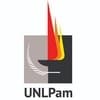
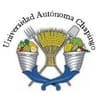


Priya Chemicals








